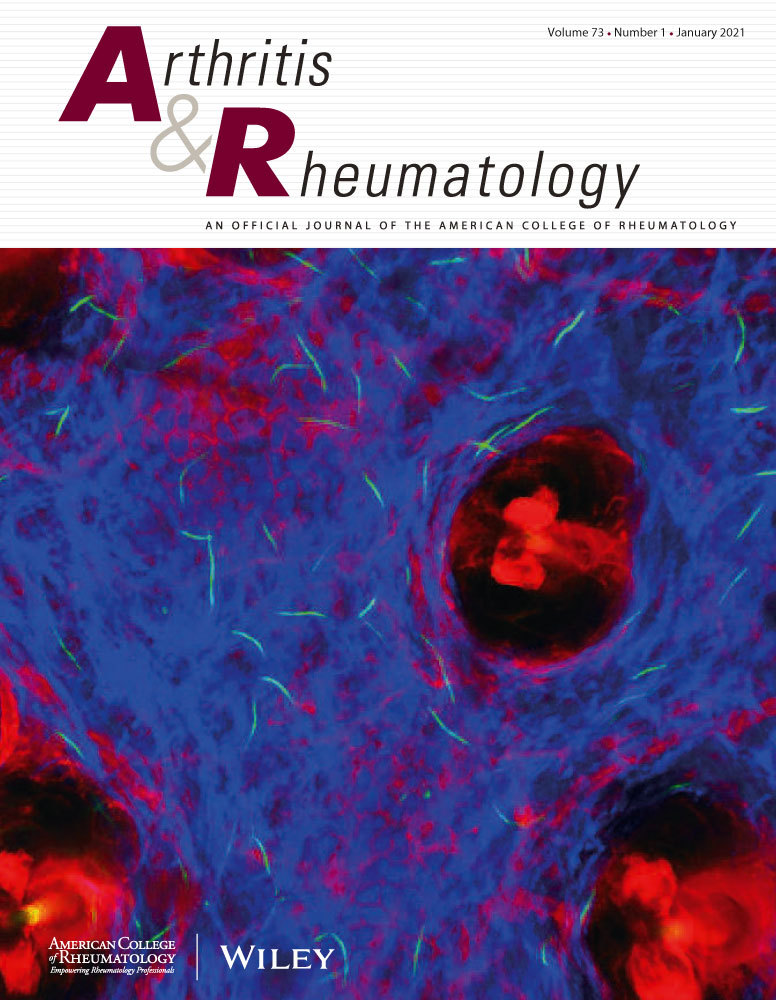ADAM9通过激活IGF - 1信号通路促进Th17细胞糖酵解和自身免疫
IF 10.9
1区 医学
Q1 RHEUMATOLOGY
引用次数: 0
摘要
目的il - 17产生CD4+ T辅助细胞(Th17)参与自身免疫性疾病的发病机制,包括月牙性肾小球肾炎。虽然有报道称崩解素和金属蛋白酶9 (ADAM9)与器官炎症有关,但其机制尚不清楚。本研究的目的是研究ADAM9如何改变T细胞代谢以促进Th17细胞分化的产生。方法采用羊抗GBM IgG诱导Adam9+/+和Adam9 - / -小鼠抗肾小球基底膜(GBM)型肾小球肾炎,并比较疾病严重程度。使用海马XFp细胞外通量分析仪测量Th17细胞的糖酵解,并对Adam9+/+和Adam9−/−小鼠的Th17细胞进行代谢组学分析。我们测量了葡萄糖转运蛋白1 (GLUT1)在Adam9+/+和Adam9−/−小鼠的Th17细胞和胰岛素样生长因子1 (IGF‐1)处理的Th17细胞中的表达。最后,我们评估了ADAM9对IGF结合蛋白4 (IGFBP4)的蛋白酶活性。结果ADAM9缺失小鼠肾浸润CD4+ T细胞数量有限,注射羊抗GBM IgG后肾损伤和炎症减轻。ADAM9缺乏导致Th17细胞中GLUT1表达和糖酵解降低。在机制上,我们发现ADAM9切割IGFBP4并使IGF‐1释放,从而增强GLUT1的表达并促进糖酵解。结论通过切割IGFBP4, ADAM9释放IGF‐1,进而上调GLUT1的表达,促进Th17细胞糖酵解。这些发现表明靶向ADAM9或阻断IGF‐1可能为自身免疫性疾病提供一种治疗策略。本文章由计算机程序翻译,如有差异,请以英文原文为准。
ADAM9 promotes glycolysis in Th17 cells and autoimmunity through activation of IGF‐1 signaling
ObjectivesIL‐17‐producing CD4+ T helper (Th17) cells contribute to the pathogenesis of autoimmune diseases, including crescentic glomerulonephritis. Although a disintegrin and metalloproteinase 9 (ADAM9) has been reported to contribute to organ inflammation, the mechanism remains poorly understood. The goal of the current study was to investigate how ADAM9 alters T cell metabolism to promote the generation of Th17 cell differentiation.MethodsWe induced anti‐glomerular basement membrane (GBM) glomerulonephritis in Adam9 +/+ and Adam9 −/− mice using sheep anti‐GBM IgG and compared disease severity. Glycolysis in Th17 cells was measured using a Seahorse XFp Extracellular Flux Analyzer, and metabolomic analysis was conducted on Th17 cells from both Adam9 +/+ and Adam9 −/− mice. We measured the glucose transporter 1 (GLUT1) expression in Th17 cells from Adam9 +/+ and Adam9 −/− mice and insulin like growth factor 1 (IGF‐1) treated Th17 cells. Finally, we assessed the protease activity of ADAM9 on IGF binding protein 4 (IGFBP4).ResultsMice deficient in ADAM9 had limited numbers of kidney‐infiltrating CD4+ T cells and suffered reduced kidney damage and inflammation following the injection of sheep anti‐GBM IgG. ADAM9 deficiency led to decreased GLUT1 expression and glycolysis in Th17 cells. Mechanistically, we found that ADAM9 cleaved IGFBP4 and enabled the release of IGF‐1, which enhanced the expression of GLUT1 and promoted glycolysis.ConclusionsBy cleaving IGFBP4, ADAM9 releases IGF‐1, which in turn upregulates GLUT1 expression and promotes glycolysis in Th17 cells. These findings suggest that targeting ADAM9 or blocking IGF‐1 should provide a therapeutic strategy for autoimmune diseases.
求助全文
通过发布文献求助,成功后即可免费获取论文全文。
去求助
来源期刊

Arthritis & Rheumatology
RHEUMATOLOGY-
CiteScore
20.90
自引率
3.00%
发文量
371
期刊介绍:
Arthritis & Rheumatology is the official journal of the American College of Rheumatology and focuses on the natural history, pathophysiology, treatment, and outcome of rheumatic diseases. It is a peer-reviewed publication that aims to provide the highest quality basic and clinical research in this field. The journal covers a wide range of investigative areas and also includes review articles, editorials, and educational material for researchers and clinicians. Being recognized as a leading research journal in rheumatology, Arthritis & Rheumatology serves the global community of rheumatology investigators and clinicians.
 求助内容:
求助内容: 应助结果提醒方式:
应助结果提醒方式:


